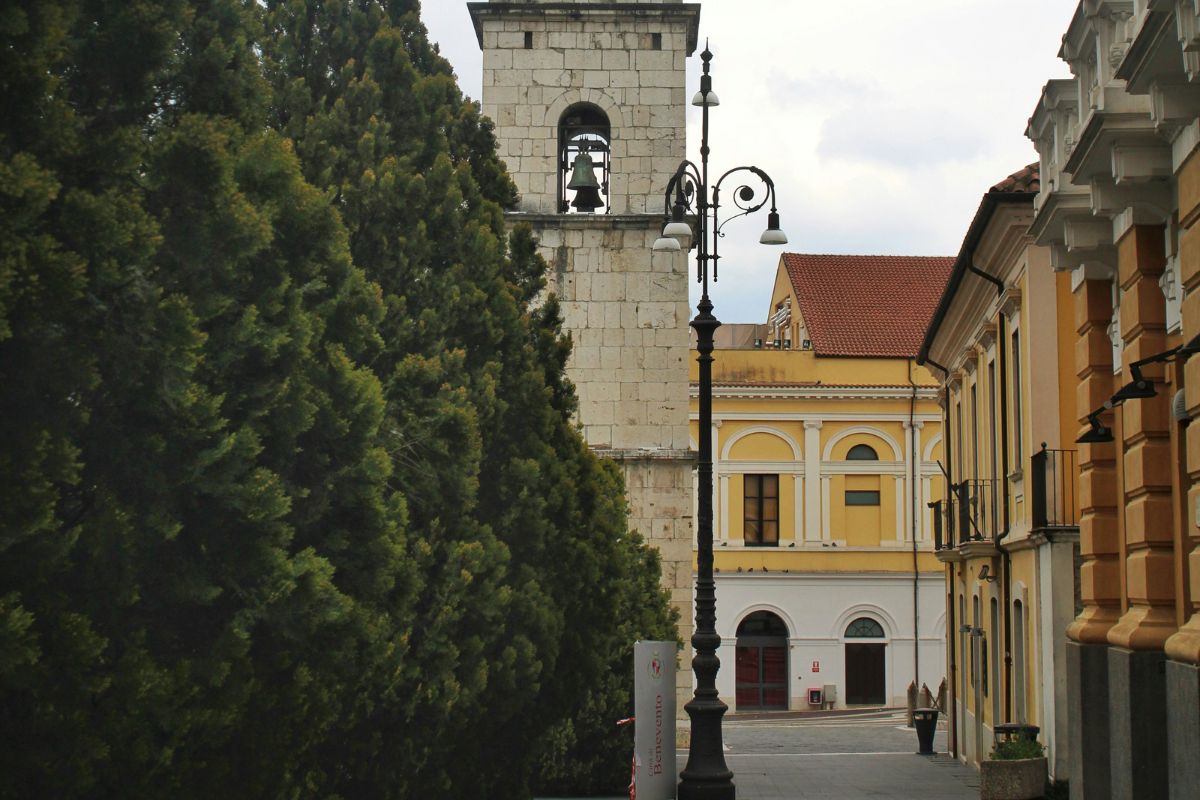When I first set foot in Benevento, I honestly didn’t realize I was wandering into one of Italy’s most mysterious cities. Just a couple hours from Naples, this ancient town hides an enchanting secret—it’s called the City of Witches.
The legend of the Janara (witches of Benevento) stretches back to the 13th century, but you can trace their story to even older pagan rituals beneath a legendary walnut tree along the Sabato River.
They say witches from all over Europe gathered at this special tree, performing rituals that mixed ancient Roman traditions with newer magical practices. When I wandered Benevento’s narrow streets, I could almost hear the whispers of this strange heritage around every turn.
The town doesn’t shy away from its witchy reputation. Instead, it leans into it, which makes it a pretty fascinating spot for anyone who loves folklore.
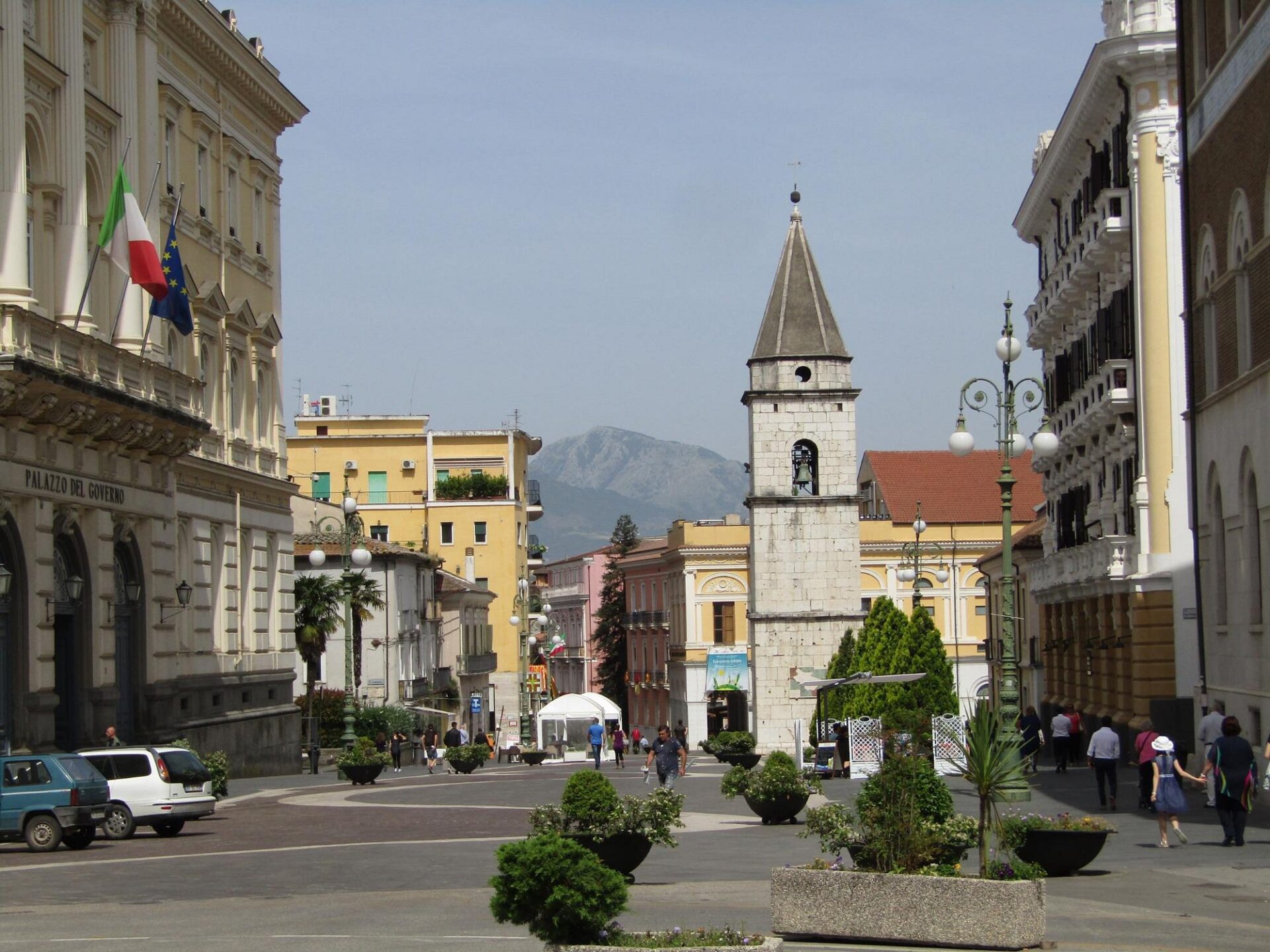
Benevento’s stories of witchcraft twist together with its Roman history. The city once served as a key Roman settlement, and a lot of people believe the witch legends grew out of older pagan ceremonies.
As I explored the Roman theater and Trajan’s Arch, still standing proud, I kept wondering what layers of history might still be hiding under this captivating Italian town.
Benevento: Land of Legends and Romans
Benevento fires up the imagination with its mix of Roman grandeur and mystical folklore. This ancient city stands right where history and myth collide, where pagan rituals thrived before Christianity took over.
The Roman Heritage of Benevento
When I strolled through Benevento, I couldn’t miss the Roman influence. The Arch of Trajan, built in 114 CE, still stands tall, covered in detailed reliefs celebrating Emperor Trajan.
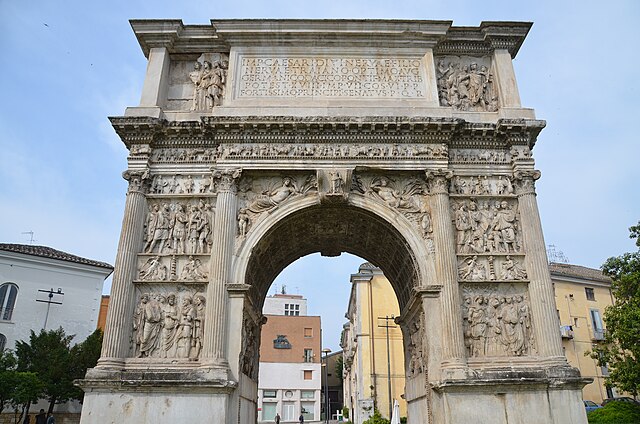
Image Source: Wikimedia Commons
Honestly, it’s one of the best-preserved Roman arches I’ve ever seen in Campania.
The Roman Theater once held 10,000 people and still impresses today. The Samnites originally lived here, but Rome conquered them in 268 BCE and turned Benevento into an important Roman colony called Beneventum.

Image Source: Wikimedia Commons
In Piazza Santa Sofia, ruins tell the story of Roman engineering and city planning. Walking among these old stones, I felt a weird connection to a civilization that shaped so much of Europe.
Transformation from Paganism to Catholicism
Benevento’s spiritual journey is honestly fascinating. The city once centered around pagan worship, especially for the Egyptian goddess Isis.
The famous Lombard Temple, now a UNESCO World Heritage site, marks this shift.
In the 6th century, Benevento became a powerful Lombard duchy. Old beliefs mixed with new Christian teachings here.
I’ve found that many Catholic churches in the city actually stand on top of ancient pagan temples.
The Cathedral of Santa Maria Assunta shows this religious evolution. Inside, you’ll spot remnants of older structures built right into the Christian architecture.
Pilgrims still come to worship at sites where pagan rituals once happened.
The Power of Place: Groves and Sacred Sites
Benevento’s sacred natural spaces set it apart. The famous walnut tree grove outside the city supposedly brought witches—called “janare”—together under the full moon.
Even though the original grove is long gone, the mythology hangs around in local stories.
I’ve wandered through vineyards where people still honor ancient Etruscan spirits during the grape harvest. The land and the legends feel deeply connected here.
The River Sabato, winding through Benevento, once marked the line between the living and the spirit world. Standing by its banks at sunset, I could see why this place inspired so many myths.
La Torre, an old watchtower, gives you panoramic views of these mystical landscapes. From up there, you can really see how Benevento’s natural features made it perfect for both Roman defenses and secret pagan rites.
The Witchcraft of Benevento: Lore Through the Ages
Benevento really stands out in Italy’s witchcraft history. Here, tales blend pagan traditions, Lombard rituals, and medieval superstition into a wild mix of supernatural belief.
The Witches of Benevento and Their Reputation
When I visited, locals shared stories of the janare—witches whose legends have echoed for centuries. These women weren’t the fairy tale kind; people believed they had real supernatural powers that both scared and fascinated the community.
Benevento’s witches gained a reputation that spread way beyond Italy. Old accounts talk about them gathering at night, performing rituals with a mix of ancient pagan and darker practices.
What’s unique here is their tie to the Lombard warriors who once ruled the area. The Lombards brought their own magical traditions when they took over in the 6th century, adding another layer to the supernatural vibe.
Walnut Tree of Benevento: Epicenter of Enchantment
The legendary walnut tree sits at the heart of Benevento’s witchcraft lore. According to legend, this tree grew near the Sabato River and served as the main spot for witches’ nightly gatherings.
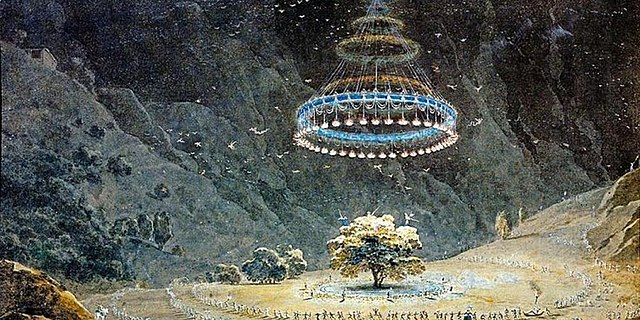
Image Source: Wikimedia Commons
Old stories describe women dancing around the tree under the moon. The Lombards watched these rituals, where people would leap around the tree, which supposedly teemed with snakes—a powerful magical symbol.
Warriors joined in by stabbing goat skins hanging from the branches. This odd ritual probably tied back to ancient pagan fertility rites and sacrifices that predated Christianity.
The tree’s reputation grew so notorious that the Church eventually ordered it cut down. Still, the stories claim the witches simply found new places to gather.
Surviving Traditions: Charms and Conjurations
Even now, you’ll find traces of these ancient practices in local culture. Some elderly residents still make traditional charms called “brevi,” saying their ancestors passed down these protective spells.
Certain regional words and phrases echo old conjurations. These linguistic leftovers preserve magical formulas once used to call spirits or channel supernatural power.
Many families keep little protective amulets, much like those described in medieval witchcraft tales. These charms are supposed to keep evil away and bring good luck.
Local herbalists still brew remedies using methods that look a lot like the potions attributed to Benevento’s witches. They gather plants under specific moon phases, keeping alive the connection to astronomical timing that was so important in old magical practices.
Diana, Aradia, and the Moon Goddess Legacy
The moon goddess tradition in Benevento ties ancient Roman worship to later witchcraft. This spiritual thread runs from Diana through her daughter Aradia, shaping the region’s mysterious reputation.
Diana and Her Mythic Influence
In Benevento, Diana wasn’t just another goddess—she was the goddess. Locals spoke of her with a special kind of reverence well into Christian times.
As the Roman moon goddess, Diana ruled wild places, hunting, and women’s mysteries.
Her sacred groves near Benevento became gathering spots for worship. These wooded sanctuaries felt especially important during full moons, when her power supposedly peaked.
What really grabs me is how Diana’s worship blended with local customs. The ancient walnut tree became linked to her cult, with followers meeting under its branches for rituals. This closeness to nature stuck around long after Rome’s fall.
Aradia: The Daughter of Witchcraft
Aradia pops up in folklore as Diana’s daughter—a figure who bridges the divine and the human. Legends say Diana sent Aradia to Earth to teach witchcraft to oppressed peasants.
This story really took off after Charles Leland’s 1899 book “Aradia, or the Gospel of the Witches,” but the beliefs likely existed in folk traditions long before.
In Benevento’s stregheria tradition, Aradia stands for divine feminine power that anyone can tap into. Her teachings revolve around moon worship, herbal wisdom, and personal empowerment.
Practitioners would gather herbs by moonlight and craft medicine while invoking her name, believing her blessing made remedies more effective.
The Priest, the Doctor, and the Rex Nemorensis
Three figures stood out in Benevento’s moon goddess traditions. The priest led Diana’s rituals at sacred groves and kept the old knowledge alive.
The doctor—more of a magical healer than a physician—specialized in herbs blessed by the moon. I’ve read accounts of these practitioners blending practical medicine with ritual.
The Rex Nemorensis, or “King of the Grove,” is the most intriguing. This role started as a tradition where a slave could become priest-king by defeating the current holder. In Benevento, it turned into more of a symbolic position.
These roles helped pagan elements survive even when Christianity took over. Local healers kept herb lore alive, and village elders remembered old stories about Diana’s power.
Folklore, Freedom, and the Evolution of the Witch’s Image
The witches of Benevento have changed from feared occult figures to complex symbols of resistance and cultural identity. Their story tracks broader shifts in how society views magic, femininity, and spiritual freedom.
From Persecution to Freedom
Back in medieval times, folk magic practitioners in Benevento faced harsh persecution. The Catholic Church saw local mystics as dangerous heretics.
Women skilled with herbs were especially at risk.
I visited a few historical sites where trials happened. The atmosphere still feels heavy, honestly.
Locals told me stories handed down about ancestors who practiced in secret.
By the 18th century, things started to change. What once was called “witchcraft” became recognized as Italian folklore and traditional knowledge.
Persecution faded as the Age of Reason swept through Europe.
By the 20th century, practicing these traditions turned into a symbol of cultural freedom. Today, the witch stands for resistance against oppression, not something to fear.
Symbols of the Mystic: Janus and Beyond
As I wandered Benevento’s old streets, I noticed pagan symbols mixed with Catholic ones. The two-faced god Janus pops up often in local art and architecture.
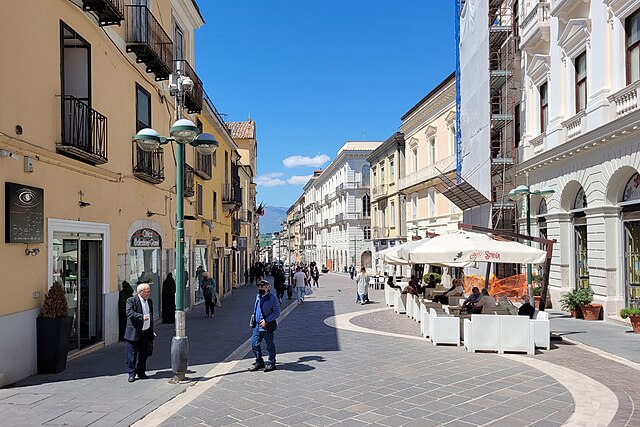
Image Source: Wikimedia Commons
The walnut tree remains a big deal in witch lore. Legends say mystics met beneath its branches to worship spirits and perform rituals.
These trees symbolized knowledge and healing.
Ravens and black dogs show up in plenty of stories as magical helpers. Local guides pointed out old carvings of these animals on buildings.
The unguent or flying ointment is another powerful symbol. Folklore says it let witches travel spiritually while their bodies stayed behind.
All these symbols create a rich visual language that still inspires artists and spiritual seekers.
Modern Interpretations and Influences
In recent decades, Benevento’s witches have enjoyed a cultural revival. Raven Grimassi, an Italian-American author, helped bring Stregheria traditions back into the spotlight.
I joined a modern festival in Benevento celebrating this heritage. People weren’t exactly practicing “witchcraft” like their ancestors, but they were honoring tradition and feminine power.
Italian-American communities in New York and elsewhere keep these customs alive through art, food, and spirituality.
What was once hidden has turned into a source of pride.
Tourism now leans into this mysterious legacy. Shops sell walnut liqueur and art featuring the witches’ sabbat.
Modern pilgrims come to Benevento for spiritual inspiration, not condemnation.
The story keeps evolving as new generations reinterpret these traditions in books, films, and online.
Planning Your Benevento Pilgrimage: Practical Tips for Travelers
Benevento offers a rare mix of mystical witch lore and ancient Roman history. It’s compact enough for a two-day trip, though you’ll want to plan around local festivals if you want the full experience.
Sacred Sites and Can’t-Miss Monuments
I was honestly blown away by how much history fits into this small city. The Arch of Trajan is a must-see Roman monument from 114 CE. Its reliefs tell the story of Emperor Trajan’s victories.
Don’t skip the Santa Sofia Church, a UNESCO World Heritage site that always reminds me of its famous cousin in Istanbul. This 8th-century Lombard church has a unique circular layout and beautiful frescoes.

Image Source: Wikimedia Commons
The Roman Theater still seats up to 10,000 and hosts summer performances. I recommend going in the morning—the light makes the ancient stones practically glow.
If you’re into witch lore, seek out the spot where the legendary Walnut Tree of Benevento once stood. The tree’s gone, but the place still carries a lot of symbolic weight in Italian folklore.
Local Legends and Cultural Festivals
If you want to experience Benevento’s witchy side, come for the Janare Festival in June. I joined locals dancing and celebrating the city’s mysterious past with music, food, and performances under the stars.
Wine lovers should check out the Grape Harvest Festival in September. I tasted local Aglianico and Falanghina wines and learned how these grapes link Roman traditions to witch legends.
For a taste of local spirits—both the drink and the supernatural—try the famous Strega liqueur. Made from 70 herbs and spices, its name literally means “witch” in Italian. The distillery offers tours where you can see how this bright yellow liqueur comes together.

Image Source: Wikimedia Commons
Benevento sits just 50 minutes by train from Naples, so it’s an easy day trip. Still, I’d suggest staying overnight at La Torre, a boutique hotel in a converted medieval tower, to really soak up the city’s magical vibe.

